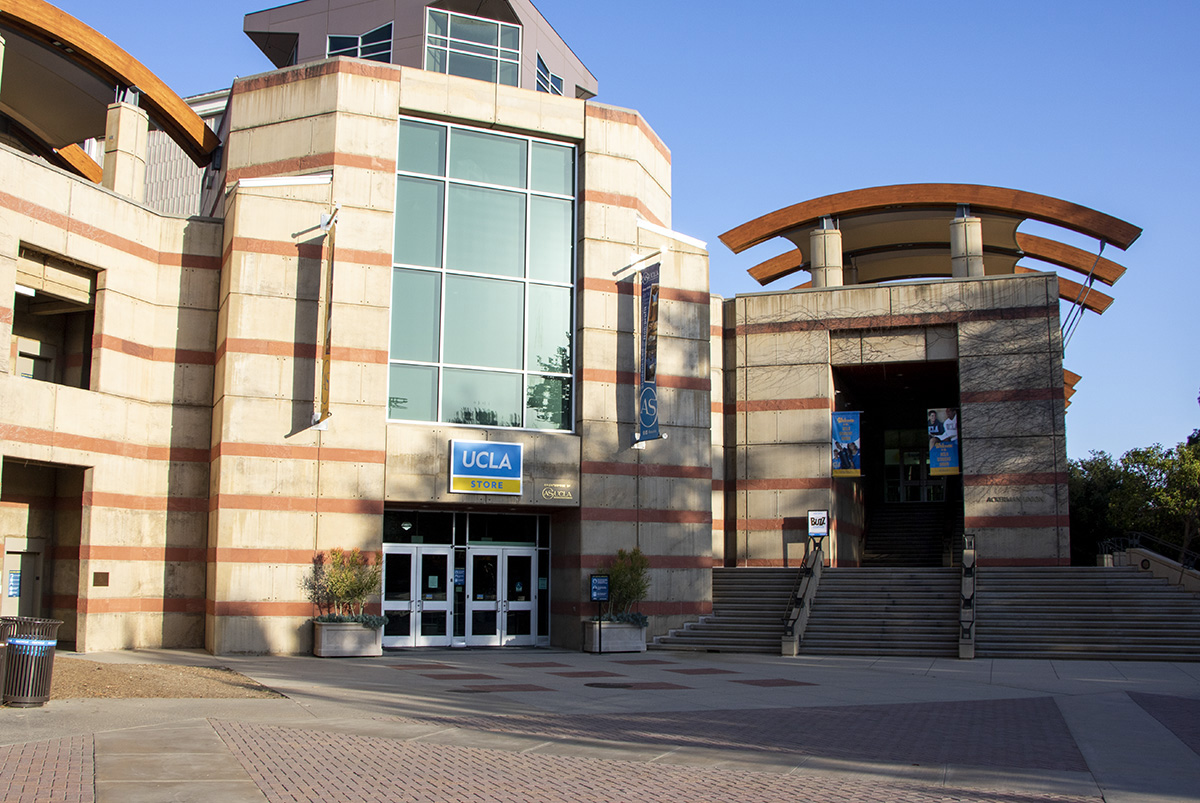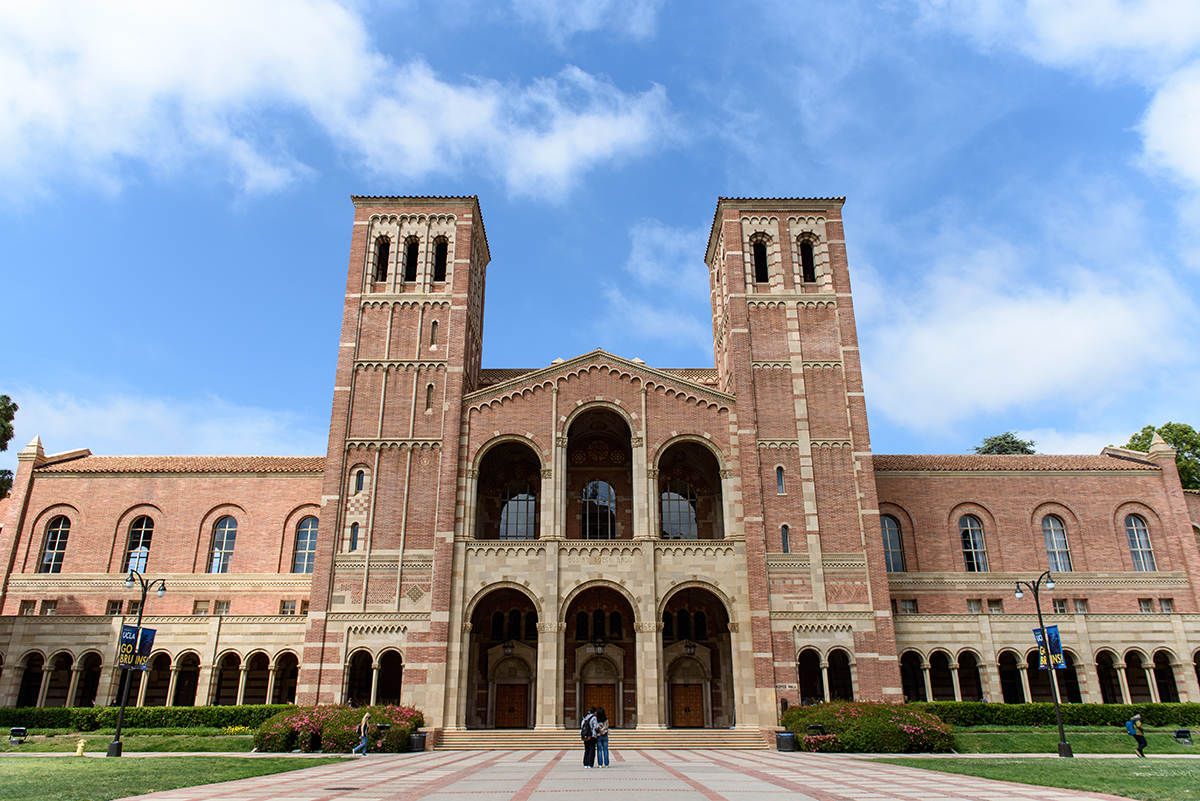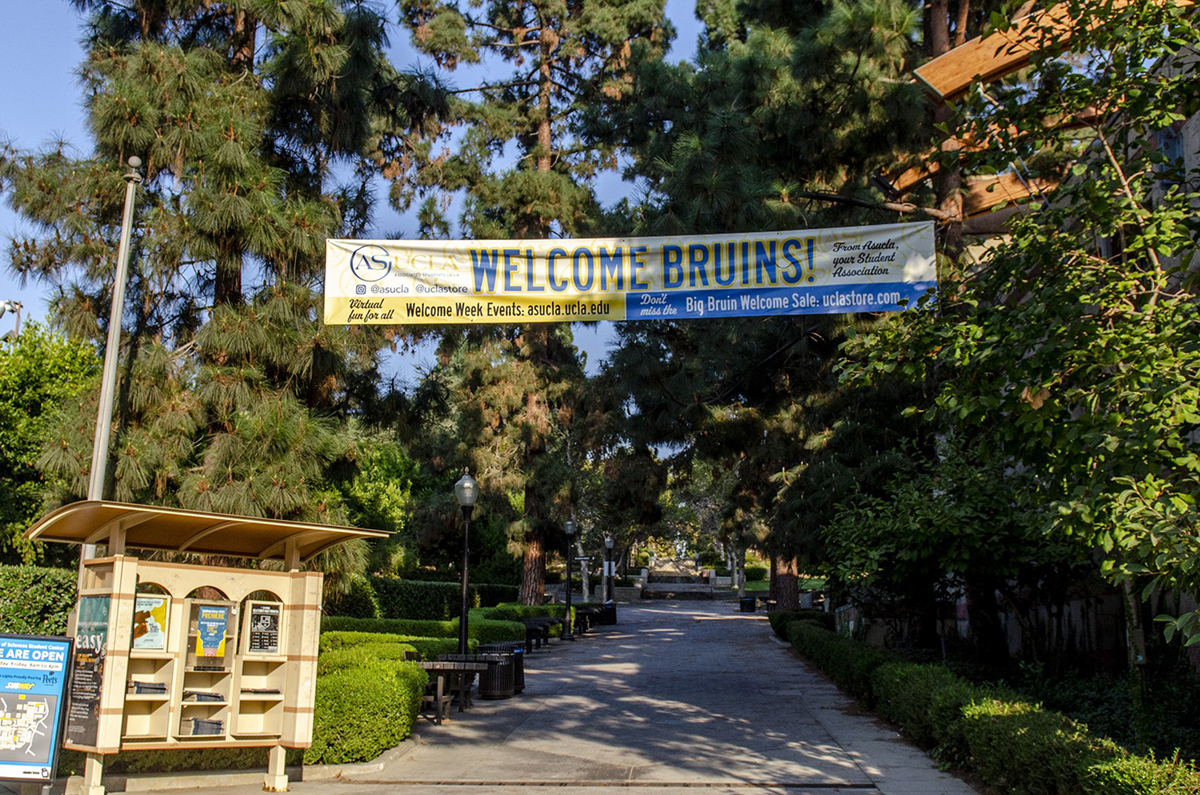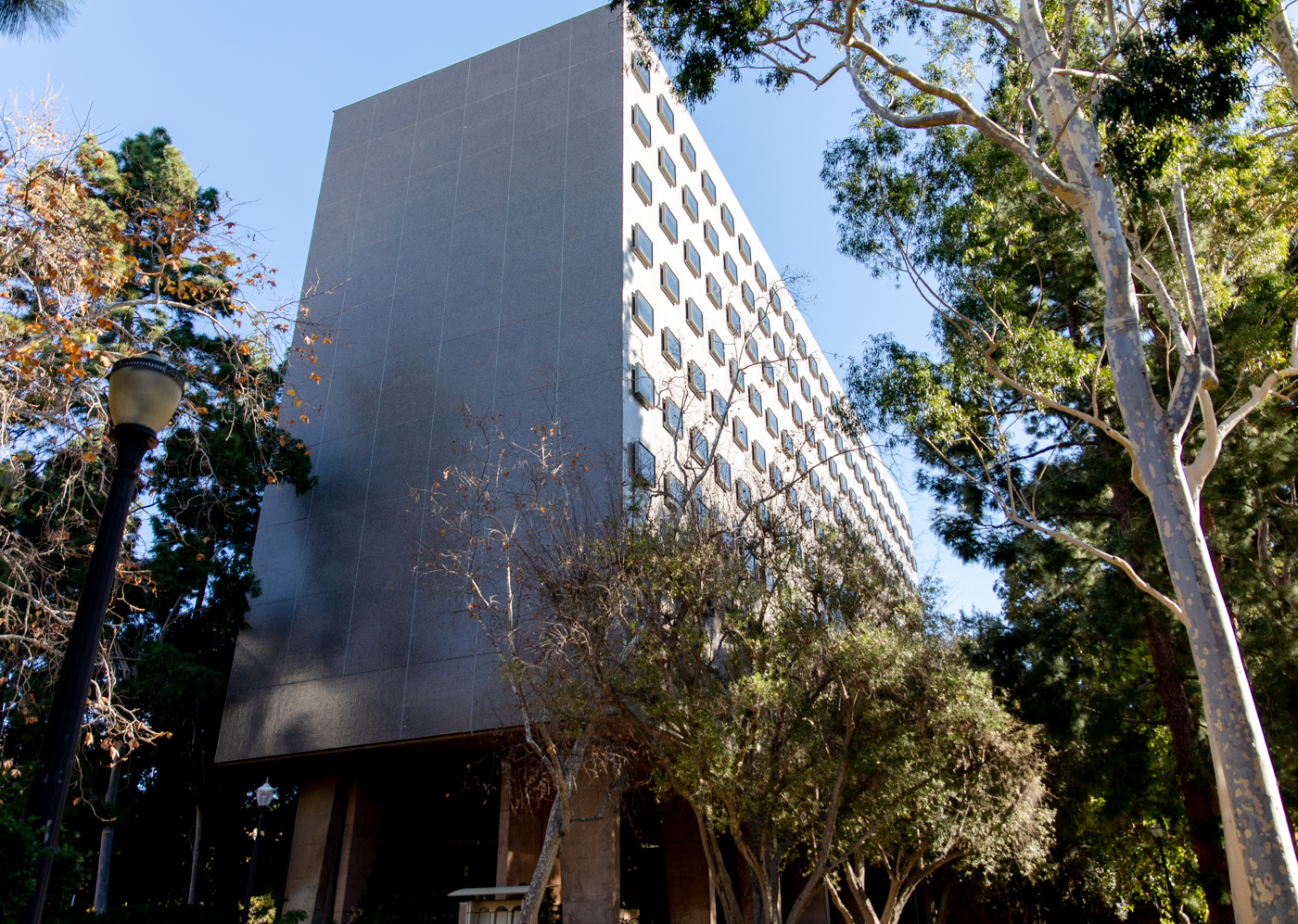Minority-serving institution designations and their implications at UCLA
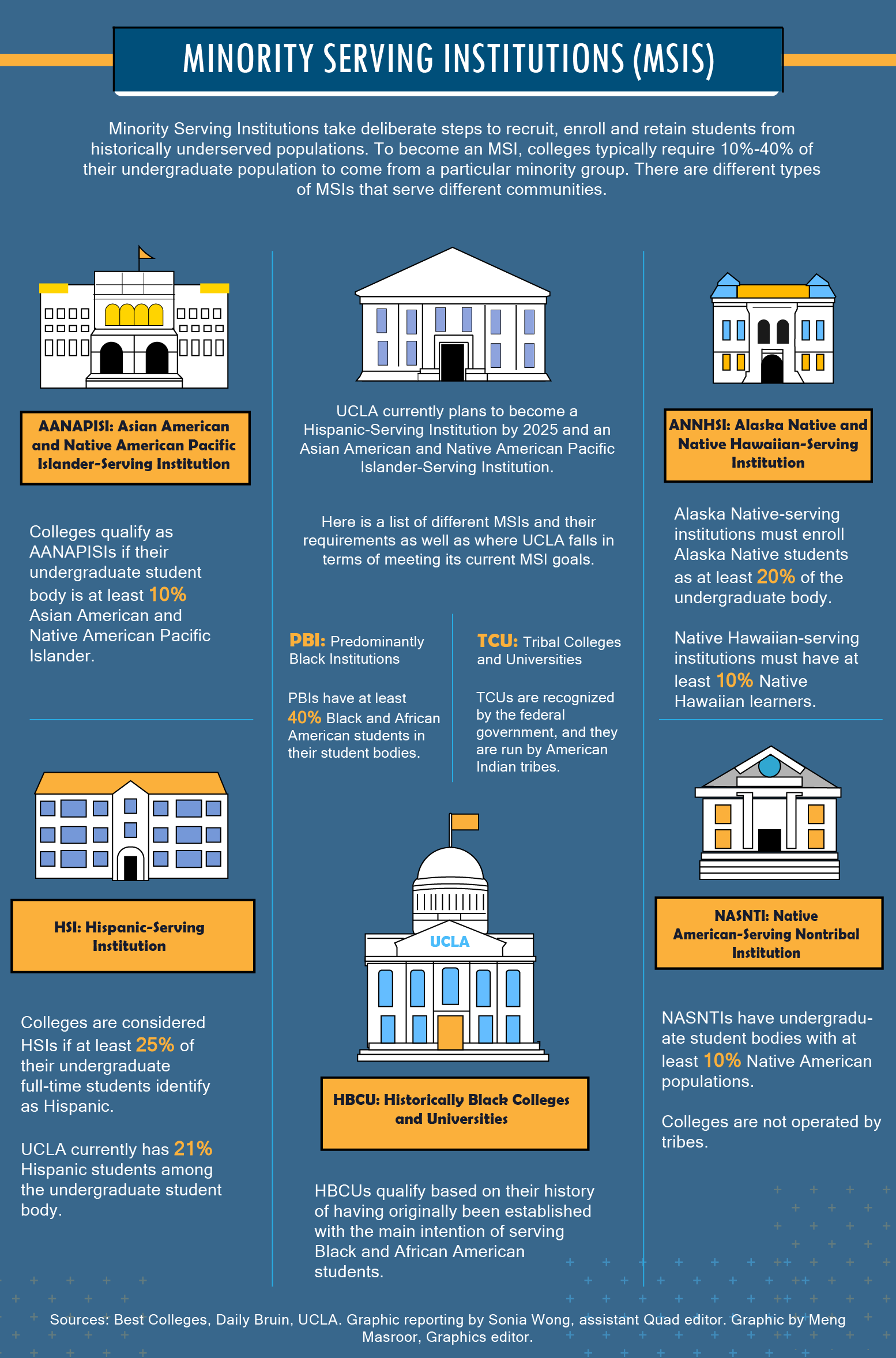

By Bryana Plata
Dec. 2, 2023 3:03 p.m.
The American education system is working to make colleges and universities more equitable by becoming minority-serving institutions, which aim to serve specific minority groups with various resources and opportunities.
UCLA is currently on the road to becoming both a Hispanic-serving institution and an Asian American and Native American Pacific Islander-serving institution. With these goals in mind, what does it mean for a university to earn these designations?
According to the United States Department of the Interior, minority-serving institutions are institutions of higher education that serve minority populations and offer social and educational skills in an effort to minimize the effects of racial discrimination and limited economic opportunities in academia.
Marla Franco, vice president for the HSI initiatives at the University of Arizona, said becoming an MSI means higher education institutions ensure an environment where students can thrive without abandoning their identity and lived experiences.
Franco provides training for greater college access and degree attainment for underserved and minority students not only at the University of Arizona but also in different capacities statewide and nationally.
“I certainly do it in a way where I think about the younger version of myself, a first-generation college student Latina who had aspirations to pursue higher education,” Franco said.
HSIs are one of many categories of minority-serving institutions, and many U.S. colleges and universities are on the path of reaching this HSI designation.
According to the University of California, five out of nine UC undergraduate campuses are currently designated HSIs, with UCLA planning to join this group by 2025.
According to Chancellor Gene Block’s Fall 2023 Update, the HSI designation requires 25% of UCLA’s undergraduates to identify as Latinx. In the 2022-2023 academic year, 22.2% of undergraduates identified as Latinx, while in fall 2023, 24% of newly enrolled students identified as Latinx.
UCLA’s HSI director, Elizabeth Gonzalez, said she helps design and implement the HSI initiative at UCLA because she wishes to create a world where there is more equity and access for Hispanic students, which the designation of HSI can provide.
But just reaching the HSI designation is not enough, Gonzalez said, and once 25% of undergraduate students identify as Latinx, UCLA will look to increase diversity by incorporating diverse curriculum and faculty.
“Even when you become an HSI, … you still have to actively be committed to bringing the designation to life in ways that matter most to the students that we’re serving,” Franco said. “The designation is a mindset.”
Similarly, another category of minority-serving institution is an Asian American and Native American Pacific Islander-serving institution.
According to the UC, the HSI initiative inspired AANAPISI, and these institutions need 10% or more Asian American, Native American and Pacific Islander students enrolled. As of right now, UCLA is the only UC undergraduate campus that has yet to become an AANAPISI. While UCLA already meets this requirement, the school is going through the application process and hopes to receive the designation from the U.S. Department of Education in the spring, according to vice provost of the Institute of American Cultures David Yoo.
Shannon Speed, director of the American Indian Studies Center and special advisor to the chancellor for Native American and Indigenous affairs, said as the No. 1 public university in the country, UCLA has an obligation to acknowledge the Native land on which it was built and serve Native students.
“There is a special responsibility to Native American people because as a land-grant institution, Native dispossession is directly responsible for us having a UC campus and the wealth that funds these campuses,” Speed said.
Speed added that in June 2022, Block announced the Native American and Pacific Islander Bruins Rising Initiative, which involves faculty hiring, a resource center for Native and Pacific Islander students, living and learning communities on the Hill and more.
“We’re talking about how we can improve campus climate and how we could bring in more Native American students to campus, because our numbers in undergraduate recruitment have remained stubbornly flat despite a lot of efforts,” Speed said.
Specific programs are designed to help minority students within academics and health care such as the Asian Pacific Health Corps, a student-led community service organization whose mission is to serve disadvantaged Asian American Pacific Islander communities that have limited access to health care.
Fourth-year microbiology, immunology and molecular genetics student and programs co-director, Michael Wong said the inaccessibility to health care, which can be exacerbated by language barriers, has inspired him to strive for accessible health care. Wong helps provide services to APHC such as checking BMI and blood pressure, vision screening, and flu shots with no fee or insurance required.
“APHC has a lot of transfer students, a lot of commuters, also a lot of first-generation students who don’t really know how to navigate UCLA,” Wong said. “We do provide a lot of resources for them in terms of mentorship, community and really making sure they find a place here at UCLA that they can call home.”
Fourth-year computational and systems biology student and programs co-director, Hannah Kim said the programs committee aims to uplift AAPI voices and raise awareness at UCLA.
When looking at increasing diversity in education, there are programs such as the First Year Scholars Program, a small learning community designed for first-generation students of color during their first year of college at UCLA to help uplift these communities. FYSP coordinator Ana Gomez said as California’s population becomes increasingly diverse, universities statewide are trying to keep up with the changing population.
According to the 2020 Census from the Public Policy Institute of California, 39% of Californians are Latino, 35% are white, 15% are Asian American or Pacific Islander, 5% are Black, 4% are multiracial and fewer than 1% are Native American or Alaska Natives.
“We’re a minority-majority state, so I think it’s important that all the UC campuses become minority-serving institutions,” Speed added. “We need to be at least educating certain communities at a proportionate rate to their presence in the state population.”
Particularly, minority-serving institutions and organizations are crucial for students who identify as first-generation who are still figuring out the educational system, Gomez said.
“For first-generation students who are figuring it out and who are oftentimes leaving a very supportive and established community back home, … you’re kind of being ripped apart from that and being transferred to a completely different environment,” Gomez said.
Gomez added that FYSP was created to help these students transition more smoothly and have all the resources they need readily available.
[Related: First-generation students discuss experiences, resources at UCLA]
As a doctoral student at UCLA Graduate School of Education and Information Studies, Gomez has studied the ways HSIs are differentiated, such as Latino serving and enrolling. A Latino-serving institution is aware of the performance of Latino students as well as considering adaptations to curriculum and academic support services. On the other hand, a Latino-enrolling HSI is when an institution is only giving access to the Latino population but not pushing for retention or completion.
Gomez added that the need for minority-serving institutions is because of the current lack of representation and understanding within faculty in the school systems.
“If faculty aren’t aware of what it means to be a first-generation student, a student of color, then they could actually be a huge deterrent to students’ success, they could cause more harm than good,” Gomez said.
Along with the student body, the lack of representation and diversity also shows itself through the faculty at UCLA. According to Unlearning Racism in Geoscience at UCLA, as of 2019, 63.5% of faculty at UCLA are white. According to a study from The Education Trust, faculty diversity can positively affect graduation rates for students of color. Therefore, the efforts of UCLA to become a minority-serving institution include efforts to hire more faculty of color, Gomez said.
“We definitely need more representation and we need more faculty of color in classrooms, working with students,” Gomez added.
As UCLA is on the road to becoming an HSI and AANAPISI, the institution is trying to provide a more welcoming educational environment for minority students of color, Franco said.
“I’m very excited to see UCLA’s commitment and intentional journey towards becoming an HSI,” Franco said. “As you start to see that enrollment increase among this student population, you’re also simultaneously creating and strengthening the environment here at UCLA that’s going to keep those students here, that’s going to make them feel welcomed and affirmed.”



